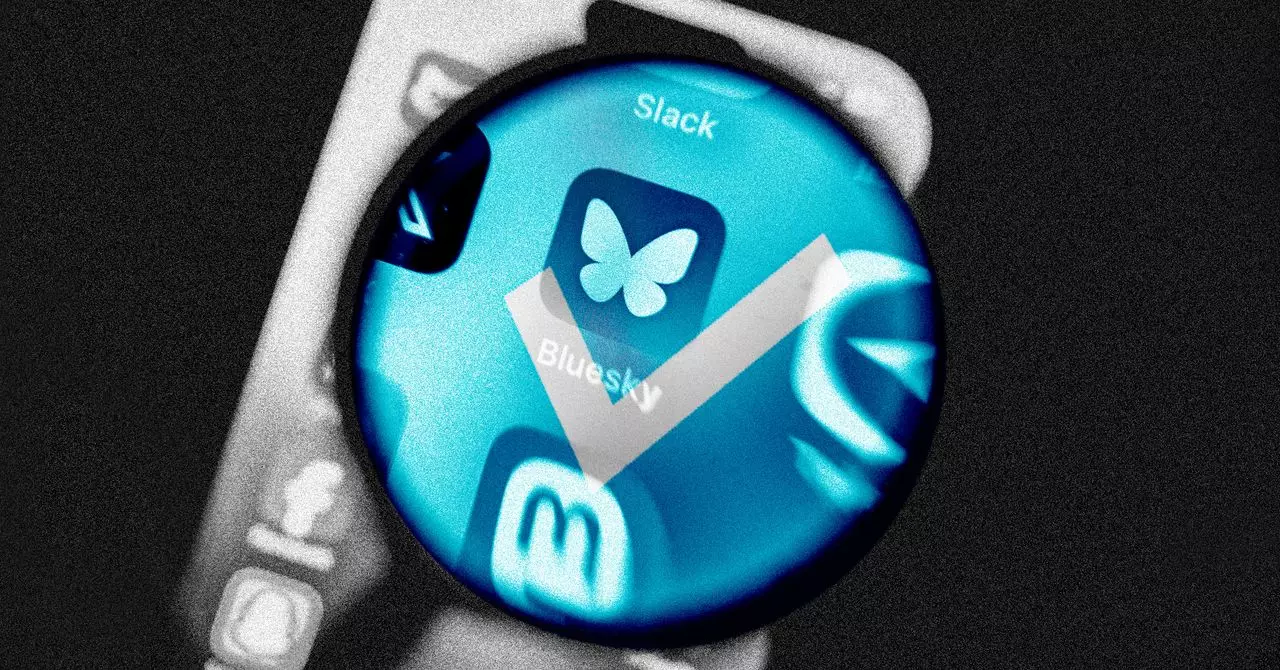In an impressive pivot designed to bolster trust, Bluesky has announced a new verification system reminiscent of the blue checkmarks that emerged during Twitter’s heyday. As a platform that has enjoyed explosive growth since its public launch in early 2024, Bluesky aims to provide its community with an improved means of distinguishing authentic accounts from imposters. Previously, the app’s self-verification method, where users could attach their domain names to their handles, often left authenticity in the hands of the users, inadvertently diluting the platform’s integrity. This shift towards an authoritative verification system may seem conventional, yet it positions Bluesky at the forefront of user trust in an age plagued by misinformation.
A Strategic Response to the Rise of Impersonation
With the rapid influx of users, Bluesky has found itself battling a growing issue: impersonators. High-profile accounts are particularly susceptible to cloning, and the wave of fraud has been well-documented. Notably, platforms like Bluesky can’t afford to let verification slip through the cracks, particularly when prominent figures like Barack Obama choose to engage with the platform. The potential for confusion and harm that impersonation poses necessitates a robust verification system that can safeguard users’ identities and bolster public trust in the platform. CEO Jay Graber’s comments about prioritizing government officials, journalists, and celebrities reflect the urgent need to protect users whose identities carry significant influence and visibility.
Blueprint for Trust: The ‘Trusted Verifier’ Model
Moreover, the introduction of a “trusted verifier” model marks an innovative approach within Bluesky’s decentralization ethos. By collaborating with reputable publications such as The New York Times and WIRED, the platform is promoting a system of shared responsibility in establishing account authenticity. This unique adaptation ensures that users will discern authenticity not only from the Bluesky team but through vetted third-party sources as well. With clickable verification indicators, users can see which organizations have vetted an account, enhancing transparency and reducing ambiguity surrounding identities. This multi-layered verification process rises above mere imitation, cementing Bluesky’s commitment to credibility.
The Stakes of Verification in Digital Social Spaces
Verification tensions are particularly profound in today’s digital realm, where social media platforms grapple with the balance of free expression and the responsibility to combat falsehoods. With traditional methods once viewed as elitist or exclusionary, the evolution of a balanced, trust-based verification system can empower users while also encouraging healthy discourse. By embodying a more decentralized approach, Bluesky adheres to a principle that emphasizes user autonomy alongside organizational integrity, fostering a space that resonates with its community’s values. The expectation that “multiple organizations can verify one account” is not just a catchy feature; it signifies an enlightened model where trust is collaboratively built and maintained.
Walking a Fine Line: Safety vs. Restriction
While Bluesky’s new verification protocol serves to enhance security, there’s an inherent risk in how verification can be perceived. The challenge is to ensure that the allure of verification does not conflate with a reward or privilege, as was seen with Twitter’s increasingly contentious pay-to-play model. Users of Bluesky must remain vigilant, understanding that a blue checkmark does not equate to unassailable truth. Instead, this system should inspire critical thinking and begin new conversations about what constitutes truth in the social media landscape. Verification must become a stepping stone, not a crutch, in building a platform marked by integrity and user-generated authenticity.
The Bigger Picture: Bluesky’s Place in Digital Engagement
As Bluesky integrates its formal verification system, the broader implications for identity and trust on social media come into focus. In an age when every online interaction is a potential mash-up of genuine expression and constructed persona, the nuances of authenticity can shape user engagement significantly. With a lean team of under 25 people, Bluesky’s endeavor to prioritize a secure environment showcases not only ambition but a critical awareness of its role in shaping how communities interact online. An unwavering commitment to user verification through both direct and third-party means is not merely a tactical move; it’s a cultural strategy that could redefine digital engagement in the years to come.

